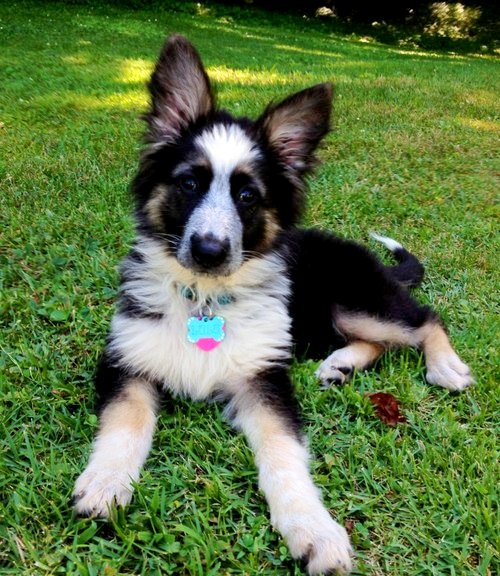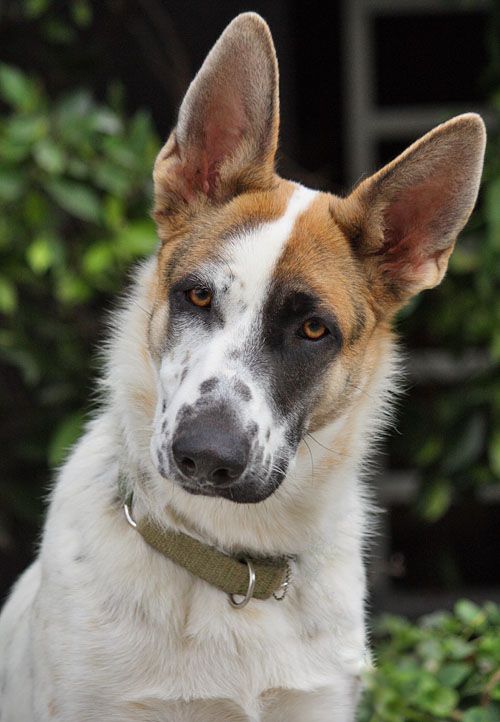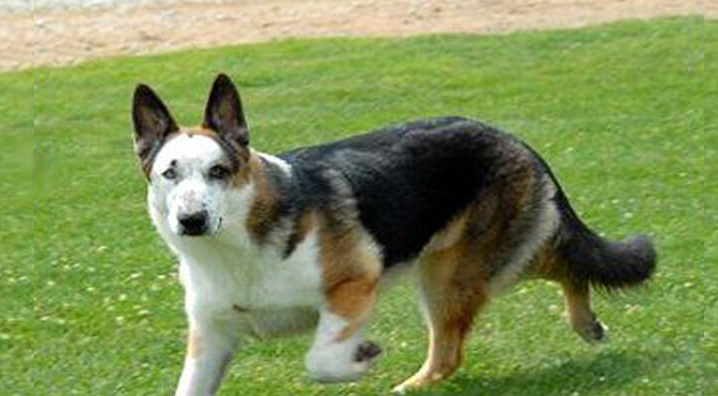Panda German Shepherd Information with Pictures
panda german shepherd
are an intelligent, pack-oriented, and active breed that originated in Germany around the early nineteenth century.
This breed gained popularity and admiration for its ability to protect cattle while maintaining a strong desire to please and bond with their master.
Panda German Shepherds are no different and have no greater proclivity for violence than other shepherd shepherds. German shepherds with an unusual color pattern are called Panda German Shepherds.
If you’re interested in learning more about the Panda Shepherd, we’ve compiled some fundamental facts you might find interesting about this breed.








Panda Shepherd’s Breeding History
As with any other German Shepherd dog, the Panda Shepherd comes from the magnificent Beowulf, who is the great-grandpa of many modern dog breeds.
Panda Shepherd is a Shepherd dog breed that was developed by the crossbreeding of two distinct shepherds. The first Panda German Shepherd was created in 2000 by the crossbreeding of two different German Shepherd dogs, one black and tan and another complete black. The name of the first Panda German Shepherd was Franka.
Its breeder attempted crossbreeding its father three times following Franka’s birth in an attempt to create a comparable breed, but their effort failed each time. However, some of Franka’s puppies acquired this Panda pattern from their mother.
Thus, the Panda shepherd is a unique dog breed, and reproducing one even from the same father is rather difficult. As a result, they are uncommon to locate, and they are also rather expensive in comparison to other purebred dogs.
German Shepherd Panda Color
The majority of Panda German Shepherds have a multicolored coat consisting of black, white, and tan. No two will be identical due to the size and form of the designs. They will, however, all wear the characteristic ‘panda’ mask that lends them their adorable moniker.
The reason it is called Panda is due to the white tone of its coat. That is, in addition to the traditional black and tan or brown hues. Generally, the German Shepherd Panda color is white with black and tan, brown, or any other color combination.
Panda German Shepherd: Size and Weight
The typical height of this dog breed is between 22 to 26 inches, close to that of a German Shepherd. As a result, it is a medium-sized dog breed, weighing between 90 and 110 pounds. Male Panda German Shepherd dogs weigh an average of 66–88 pounds (30–40 kg) while female dogs weigh an average of 48.8–70.8 lbs (22–32 kg). They range in height from 24–26 inches (60–65 cm) for males to 22–24 inches (55–60 cm) for females. As you can see, men and females are almost the same sizes.
Although the white coat of the Panda German Shepherd is due to the KIT gene, they have all the other characteristics of their German Shepherd parents. These are intelligent, energetic dogs with a fearless face similar to that of a German Shepherd.
Panda German Shepherd Puppies
If you’re fortunate enough to obtain Panda German Shepherd puppies, you must commit to providing them with the care and attention it requires and deserves. If possible, meet the parents to get a sense of how your pup will develop.
Look for an energetic puppy, not one who is hiding in a corner or appears sluggish, anti-social, or nervous. This is improbable with a good breeder!
Puppies require high-quality food that has 8% fat and 22% protein. It is critical to give them the best start possible, as nutrition has a significant role in their growth, development, and overall health once they reach maturity.
Begin training and socializing at an early age. These dogs are extremely trainable, but if you wait too long, they may develop undesirable tendencies.
The average Panda German Shepherd is regarded as a high-maintenance dog, in part due to the amount of activity required and in part due to the quantity of grooming required.
They require frequent brushing to remove mats and tangles, as well as the odd wash — around once or twice a month.
Toilet training will be one of the most difficult aspects of owning a new dog. Certain breeders will have already begun the procedure for you, which is fantastic. If not, let some time to acclimate them to their new surroundings.
They will have a small bladder and may require urination every two to three hours.
Establish a designated area in your garden or yard for them to visit, and teach them that this is the only area they are permitted to use. Always commend them when they comply!
One critical point to remember is to express your power without being overbearing. These are very intelligent canines who have a strong resemblance to their wolf forebears.
They need to understand who is in charge, and that is you! However, there is no reason to be harsh. Teach them powerful command phrases and reinforce their obedience.
Breeders of Panda German Shepherd Dog
Unscrupulous breeders will attempt to profit off the Panda German Shepherd’s popularity. They will attempt to pass off mixed breeds as genuine Panda German Shepherds, thus exacerbating the misunderstanding and fear surrounding this magnificent creature.
If you are interested in purchasing one of these magnificent puppies, there are numerous methods to ensure that the breeder is operating ethically. To begin, you should, if feasible, pay a visit to the breeder’s premises. Examine the puppy thoroughly and check for the following warning signs:
- Muzzle – If the muzzle is shorter or too pointed, or the face is too small, this dog may be a crossbreed between a German Shepherd dog and a Border Collie.
- Body – German Shepherds have a characteristic body form with sloping forequarters and slender hindquarters.
- Tail – The tail of the Panda German Shepherd dog is similar to a brush and does not wrap back over the body. It should not be excessively brief.
- Colors – Any hint of merle should be interpreted negatively. Consider colors or patchwork patterns that resemble those of another breed, such as the Australian Shepherd or Australian Cattle dog.
Apart from that, you should want to view the parents and documentation of DNA testing. Additionally, you can request proof of both parent dogs’ lineage and pedigree.
Anyone who is unable or unwilling to give this should be avoided, as they demonstrate a lack of regard for the dog’s wellbeing.
Panda German Shepherd: Related Issues
German shepherds with Panda coloring might develop issues as a result of breeding. When breeding a dog only for its coloration. You have the option of overlooking hereditary factors affecting their personality.
For instance, if a person has a shepherd that is Panda coloured and wants for the entire litter to be Panda colored, they must choose a counterpart that is also Panda colored.
If you do not provide enough exercise, training, and cerebral stimulation to your Panda German shepherd he may begin to exhibit aggressive behaviours. Loud barking, chasing other dogs, or simply being difficult to deal with are all indications that a dog is not stimulated and is not receiving appropriate exercise or training.
If you believe that your Panda German shepherd is acting aggressively, the best course of action is to contact a local trainer familiar with working breed dogs.
Conclusion
Therefore, how can you certain that you are purchasing a dog that possesses all of the characteristics of a well-bred shepherd? When looking for Panda shepherds, it’s important to consider the dog’s disposition as well as its coloration.
Inquire about the parents’ personality, get genetic testing to rule out disorders common to shepherds, and (as difficult as it may be) look beyond the gorgeous white spots to the pup’s health.

FAQs
How much is a Panda German Shepherd?
On average, the cost of a Panda German Shepherd puppy is between $1,000 and $3,000.
Pricing a dog is challenging, as fads and styles change frequently. Prices may be more competitive if there are multiple GSD breeders nearby and demand is limited.
Some sources offer costs as low as $300–$900 for purebred Panda German Shepherds. According to others, the usual price is between $1,000 and $2,000, which is comparable to the Panda German Shepherd.
Are Panda German Shepherds purebred?
Yes- Panda German Shepherds are purebred dogs without any doubt. While this may not be obvious from their markings, they are considered purebred.
Their color is caused by a mutation in their DNA, not by a selective breeding process.
When it comes to health, they are still susceptible to a number of the same problems, including hip dysplasia, cancer, and elbow dysplasia.
This is why it is critical to always get a Panda German Shepherd from a reputable breeder to help avoid inherited concerns.
